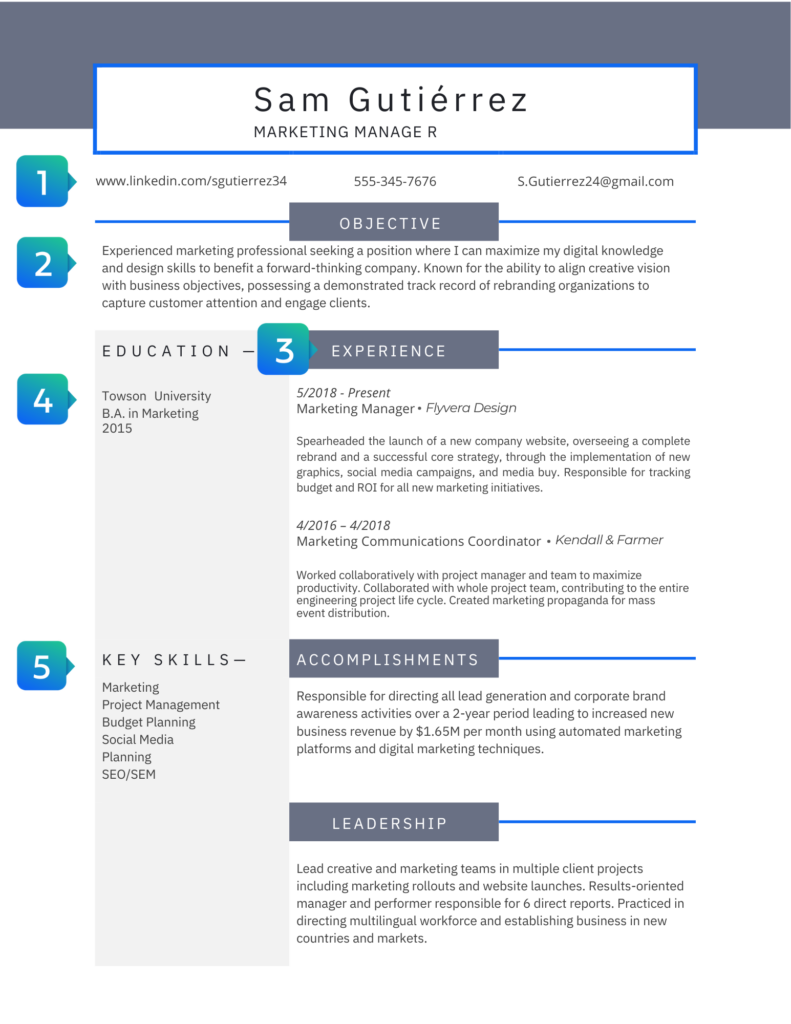What is a combination resume?
A combination resume uses pieces from two or more resume styles, like chronological and functional or traditional and modern. Using this style is a good way for you emphasize both work history and relevant skills. It can also be a strategic choice to incorporate some creative design elements that can help your resume stand out.
Who should use a combination resume?
- People who are switching careers
- Applicants with gaps in employment
- Senior-level candidates with a lengthy work history and diverse skills
- People applying to creative jobs where non-traditional resume formats are more acceptable
Who shouldn’t use a combination resume?
- Applicants for jobs in fields like academia, government, or finance
- For candidates who are well-established in their field, a different format is a better choice to showcase a strong work history
Combination resume format and key components
Since this resume borrows from other styles, its format and components may change depending on the candidate’s goal. An example is someone applying to a highly technical job, so they might use the components of a traditional resume but arrange them so that the skills section is the most prominent.
In the combination resume example below, the candidate includes the components of a traditional resume–objective, experience, education, etc.–but uses creative elements like color, shading, and columns to organize them and direct the reader’s attention.
A combination resume typically includes the following components:
- Contact
Include the standard information to get in touch with you–address, phone number, and a professional email address. You may also include a website if you have one. - Objective or Summary
This is a short statement that sets your goals and describes the value you can bring. If you’re using a combination resume because you’re switching careers, use this section to explain how your skills translate to your desired field. - Experience
List your work experience in reverse-chronological order. Use action-oriented language to describe your responsibilities and cite accomplishments wherever possible, rather than just listing tasks. - Education
Include your degree and the school from which you obtained it. Dates are optional.
- Skills or Accomplishments
The beauty of this format is that you can configure this section or sections to suit the job you’re applying for. In the example shown here, the candidate breaks these into skills, accomplishments, and leadership, all of which are relevant for the managerial positions they’re applying for.
Need help crafting a resume?
Build the perfect combination resume today to help you get hired faster!
